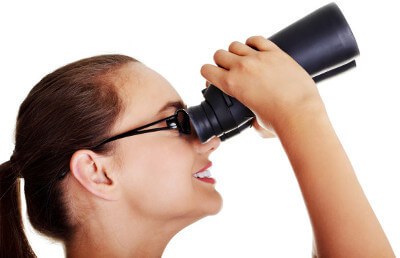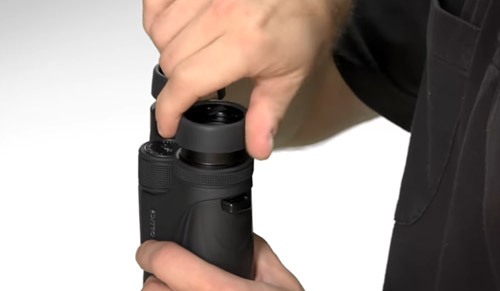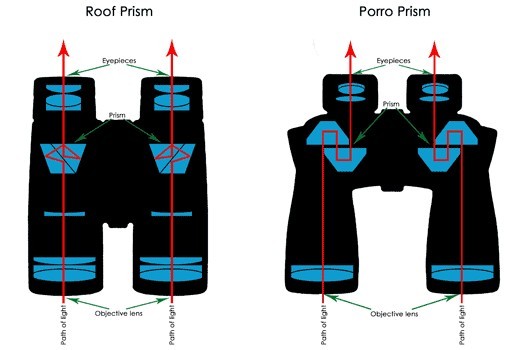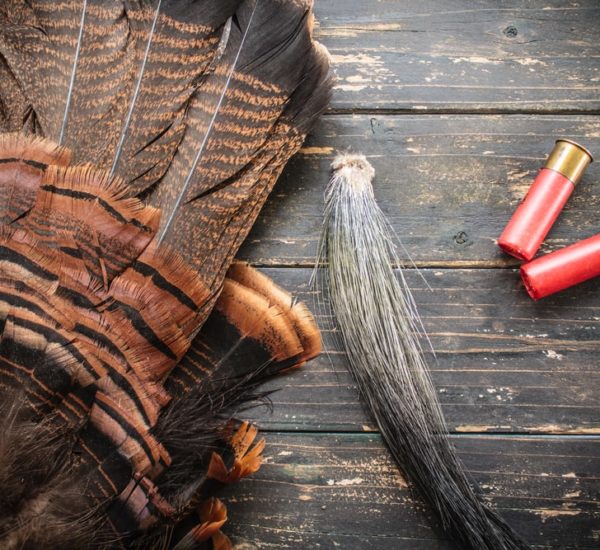Are you one of the few people that want to know whether do binoculars work with glasses or not? Well, I understand your concerns regarding using this long-distance viewing tool with eyeglasses, So I made this post to help you out.
What does that mean?
I will be providing you with answers and highlighting other important information about using binoculars with glasses. Besides that, if you also want to know how to use binoculars with glasses, this post is just for you.

Do Binoculars Work with Eyeglasses?
To be honest, there is no problem using your eyeglasses with a binocular. The primary concern for many people who do wear glasses would probably be the binoculars’ clarity when in use.
Eyeglasses are not necessary eyepieces for near-sighted (myopic) or far-sighted (hyper-myopic) individuals while using binoculars.
What is the reason for this?
The focus adjustment dial on a binocular makes the surrounding vision clearer for either of these sets of persons. Binoculars can zoom-in on things further away for near-sighted people and zoom-out near things for far-sighted persons.
Where using eyeglasses with a binocular will become necessary is for individuals with astigmatism. All these sets of persons need are to wear their eyeglasses and place the binoculars close to their glasses.
So, do binoculars work with glasses?
Yes, binoculars work properly with eyeglasses; however, your shape and type of glasses determine its necessity and functionality. Moreover, you might not find wearing an eyeglass while using a binocular unnecessary if you are short or far-sighted.
However, before you jump into using this long-distance viewing tool with your glasses, you need to know about eye relief.

What is Eye Relief in Binoculars?
Eye relief is the gap or distance between your eyes and the ocular lens of your binocular while putting this instrument to use. In simpler terms, eye relief is your eyeball’s exact distance from the eyepiece lens in your binocular.
The idea of eye relief binocular is to determine and aid binocular users to get the full field view when using or not-using eyeglasses. For persons who do not use eyeglasses with binoculars, their proper eye relief can get adjusted to the eyecups.
Simply adjust them in an upward or downward manner to get a wide circular field of view. Some of the best low-light binoculars have a click-lock. This is a nice feature because of the left and right eyecups for non-eyeglass wearers using binoculars.
However, if you wear eyeglasses, using a binocular and getting the proper eye relief will differ.
How so?
The frame (or lens) in your eyeglass increases the distance between your eyes and your binocular’s ocular lens. For good clarity, while wearing eyeglasses with binoculars, you should watch out for the quoted maximum number of eye relief.
Most of the best compact binoculars for eyeglass wearers might have a high maximum number of eye relief. As an eyeglass wearer, you will need to fold or twist the eyecups (depending on the type) because your glasses replace the space it usually takes.

What Are the Problems of Little Eye Relief?
The effect of having too little eye relief with a binocular is that your view becomes obstructed. Placing your eyeball at an extremely close distance with the ocular lens creates a cast shadow on your target.
Furthermore, too little eye relief with binocular affects the eyeball with prolonged usage. It will strain your eyes and can cause certain eye defects.
However, unlike too many eye relief problems, too little distance between the eyeball and the ocular lens is a more straightforward fix (for eyeglass wearers).
How can it get fixed?
I would advise you to simply move the binocular away from your eyes (slightly); mostly, it will eliminate the obstructed view. Moreover, these problems are not alien to even non-eyeglass wearers.
All they need to do for these sets of persons is to twist the binocular’s eyecups upward and perform a recheck. It is an easy fix.
Don’t you know how to spot common eye relief problems?
If you notice a crescent-shaped bouncing shadow around your field of view’s perimeter, it is too little eye relief. Additionally, your view might get obstructed by a slightly stationary crescent-shaped shadow. These are effects of too little eye relief!

How to Adjust Your Binoculars with Eyeglasses?
Some of the best binoculars under $200 have very easy-to-adjust viewing options with eyeglasses. However, I have discovered that many don’t know how to use binoculars or adjust their viewing settings.
Well, you want to know how to do this, right?
Now here is the thing, the first area to touch is the diopter on the binocular. On binoculars with longer eye relief, this area lies under the right eyepiece. This diopter allows users to compensate for any differences between one eye and the other.
Best way to set the diopter?
Simply set the diopter to zero (if it is not) and take a quick gaze through the eyepiece for a blurry or clear view. If it looks blurry, continuously adjust negatively or positively by turning the dial (with consistent rechecks) until it becomes clear.
If that doesn’t work,
Move to the eyecups and try correcting the eye relief while wearing your eyeglasses. Start by placing the eyecups fully outwards. If you notice a narrow field of view or a specific target is not in sight, adjust the eyecups downwards.
These adjustments should solve the problem.
In the world of binoculars and optics, proper light refraction is an essential aspect of this field. Let’s look at the types of glass prisms used in binoculars and which is best for eyeglass wearers.

Binocular Prism
Most prisms usually come from the glass, which creates a color spectrum for the dispersion and absorption of light. Many optical devices like binoculars come with BAK4 glass prisms for enhancing the light refraction process.
The primary function of binocular prisms is to increase light’s pathway from the objective lens to the eyepiece lens. And the prisms perform this action without increasing the binocular tube length.
Here are the common binocular prism types:
Porro Binocular Prism
This type of prism usually consists of about two glasses at right angles. The eyepiece and the objective lens fail to align, making light enter the binocular intermittently across the prisms.
Furthermore, the Porro prisms have an indirect impact, but they may directly influence glass use suitability.
Roof Binocular Prism
Unlike Porro prism, the roof version features distinct styles with two prisms connected differently. Another differentiating factor is that the roof prism objective lens aligns appropriately with that of the eyepiece, giving a straight tube.
Porro and Roof Prism – Which is Better for Eyeglass Wearers?
Now, judging from both prisms’ construction and arrangement in a binocular, it is almost quite clear to spot the best for eyeglass users.
Generally, most Porro prism binoculars feature foldable eyecups, which are not the best option for wearing eyeglasses. However, a premium feature of this prism is its super-wide field of view and dusk performance.
The roof prism binoculars have twist-up eyecups that are suitable for eyeglass wearers. The downside to this prism is it gives a narrow view, low light transmission rate, and is expensive.
Which is most preferred?
Undoubtedly, the roof prism is better for eyeglass wearers. However, if you wish to put other things like field of view into consideration, the Porro prism will get the upper hand. Furthermore, I believe that most binoculars with a longer eye relief make use of the roof prism.

Frequently Asked Questions
1. How to Use Binoculars with Glasses?
Some eyeglasses hold binoculars in such a way that they keep them from the eye to allow light. An exact or good way to use a binocular with glasses will be placing the frame next to each barrel.
Once it is close enough, use the diopter and eyecups to adjust the viewing. These parts of the binocular will help to give clarity and balance, especially the diopter. Turn it left or right until it becomes less blurry or clear.
2. What Is A Good Eye-Relief for Glasses Wearers?
Frankly, the most appropriate eye relief for eyeglass wearers depends on the type of glasses they own. Some glasses are thick and shaped more largely than others, while some have very thin lenses.
Regardless, a good eye-relief for glass wearers can range from 15mm to 20mm. However, a more significant percentage of professionals will state that a minimum of 20mm eye relief is ideal. So, if you wear glasses, get a binocular having 20mm as its minimum eye relief.
3. What Happens with Too Much Eye Relief?
Once the eye relief becomes exceedingly too much, your field of view becomes narrower and smaller. In addition to this effect, your views begin to have vignetting perimeters and shadowing.
Generally, having too much eye relief (distance) results in a binocular user seeing only half the target picture.
4. Who Needs to Wear Glasses When Using Binoculars?
Persons suffering from either far or short-sighted vision do not qualify for using binoculars.
How so?
The binoculars already possess the needed attributes for correcting those defects without the aid of an eyeglass.
Who then should use it?
Mostly, people with astigmatism can wear their eyeglasses while using their binoculars. Why? The binoculars do not have any unique feature for correcting this defect with an eyeglass.
Final Words
It might seem absurd to some people to wear glasses while using binoculars. But you should know that some individuals with eye defects like astigmatism need to wear eyeglasses on binoculars to see clearly.
I’m certain that with every information provided above, you don’t need to ponder whether binoculars work with glasses. All you need to do is to ensure you don’t have too little or much eye relief. And the best way to compensate for these possible problems is by getting top-rated binoculars with viewing adjustment.





